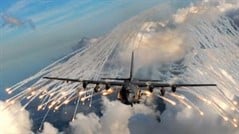
President Obama’s strategy to “degrade and ultimately destroy” ISIS depends crucially on precision bombing by drones and airplanes. The heavy lifting on the ground is supposed to be accomplished by our “allies” in Iraq and the Syrian opposition, but as any reader of the news knows, these allies are, to put it charitably, unreliable and prone to panic and/or treachery. So, despite Obama’s rhetoric, our new war against ISIS will be an air power war.
The key ideas in Obama’s bombing strategy will be the identification and killing of ISIS leadership targets and the disruption/destruction of coherent ISIS ground operations with precision weapons. That target identification task is likely to be done by small numbers of US forces working with our supposed allies. This plan is a prescription for disaster.
The seductive idea of victory through airpower alone is not a new one, and Obama has fallen for a modern improv of an old score — no doubt, in part, for domestic political reasons. The background music was conceived and advocated in the 1930s by a small group of officers in the Army Air Corps based in the Air Corps Tactical School at Maxwell Field, near Montgomery, Alabama. The two-part claim was that (1) targeteers use detailed analysis to identify key nodes crucial to functioning of the enemy’s economic infrastructure and (2) precision bombing of those nodes would bring about a socio-economic collapse. (Destroying ball bearing factories in WWII became the quintessential example of this thinking). A subsidiary proposition was that precision bombardment (code for the Norden bombsight) would minimize civilian casualties, even when targets were inside cities.
The theory was tried in Germany and failed. The bombing campaign did not achieve its predicted effects; the ambiguity surrounding perceptions of progress caused the target list to grow like crazy; and the bombing campaign degenerated into carpet bombing on cities, killing hundreds of thousands, if not millions of civilians — readers who doubt this should read the Strategic Bomb Survey conducted after WWII (The Summary Report is easily available, but the real meat is in the full report.) The fire bombing raids on Japanese cities and the atomic bombing of Hiroshima and Nagasaki did not pretend to play the charade. The intent behind the claim of victory thru air power alone was that such a war winning capability justified an independent Air Force, equal in stature and budget grabbing capability to the Army and the Navy. That intent was achieved in 1947.
Using wildly proliferating target lists to cover for failed predictions has been a staple of every precision bombing campaign since WWII. Strategic bombing in subsequent wars (Korea, Vietnam, Iraq I, Kosovo, Iraq II, Afghanistan) played on the idea of the critical target theme with similar results. This phenomenon has reached what may be an apotheosis of absurdity in the proliferating lists of high value terrorist targets. And the rise of ISIS proves the point — we obsessed over and eventually killed Abu Musab al-Zakawi, the founder of the original incarnation of ISIS, only to see an even more capable ISIS arise from ashes.
But there is more to the failure of the theory of precision bombardment. The precision war in its current incarnation suffers from the same historical flaw that complimented the theory of critical targets: Bombing is never as precise as its advocates claim. The theory assumes we can use technology to turn war into a methodical predictable battle; in effect this mentality places priority on technology at the expense of human factors. The substitution results in magnified organizational and technical complexities that always break down in real war. My good friend Andrew Cockburn has just written an outstanding essay in Harpers that examines this aspect of a fatally flawed theory of victory through airpower alone. And in so doing, he has provided a case study in how this theory captures thinking and creates a rigid, non-adaptable, techno-mechanical OODA loop* that turns Colonel Boyd’s maxim — machines don’t fight wars, people do, and they use their minds — on its head.
* An introduction to the late Colonel Boyd’s theory of the OODA loop and why it is a foundation for thinking about tactics and strategy in any type of conflict can be found here. Ironically, Boyd was a retired Air Force officer.
Franklin “Chuck” Spinney is a former military analyst for the Pentagon. Reprinted with author’s permission from his blog.
